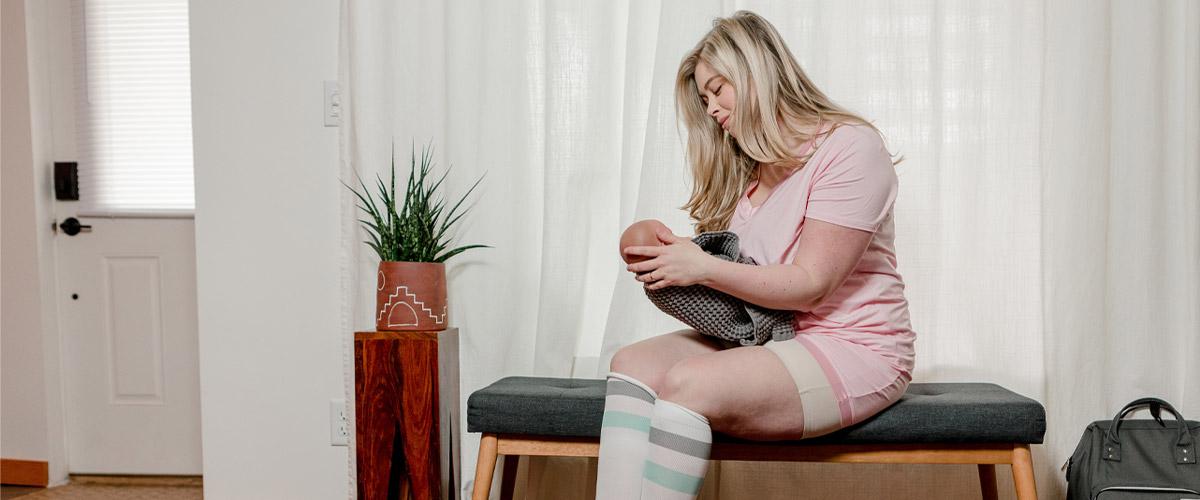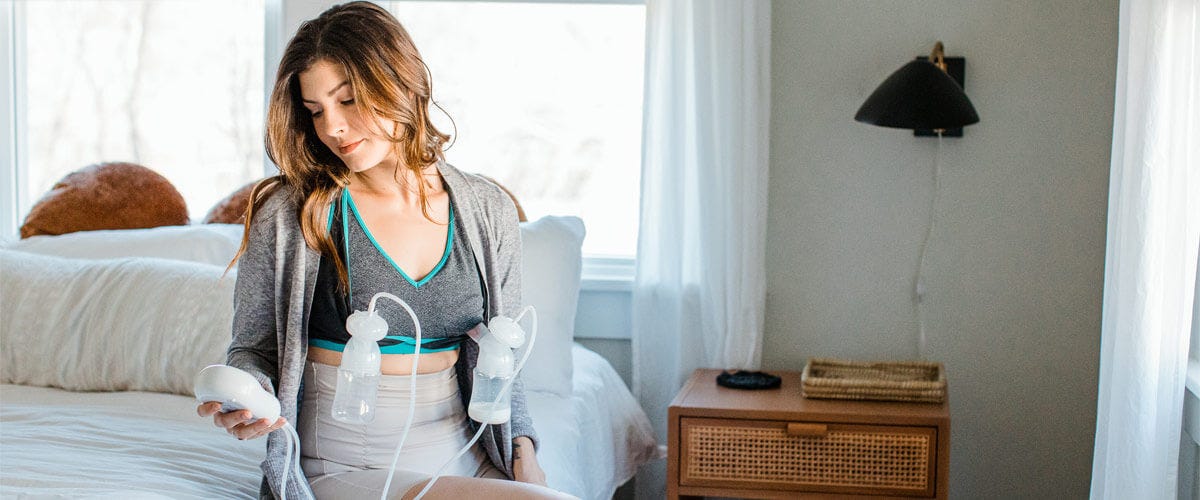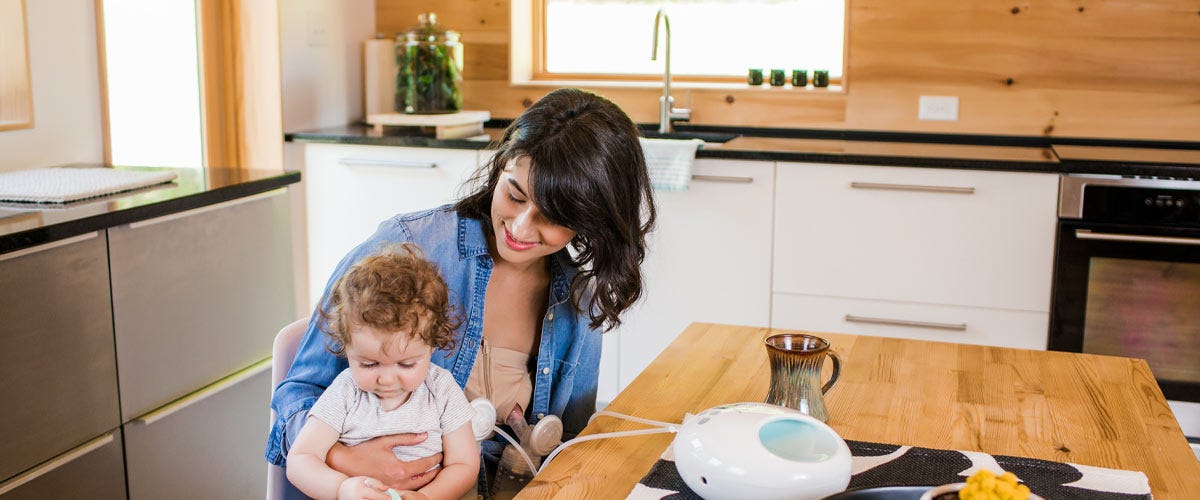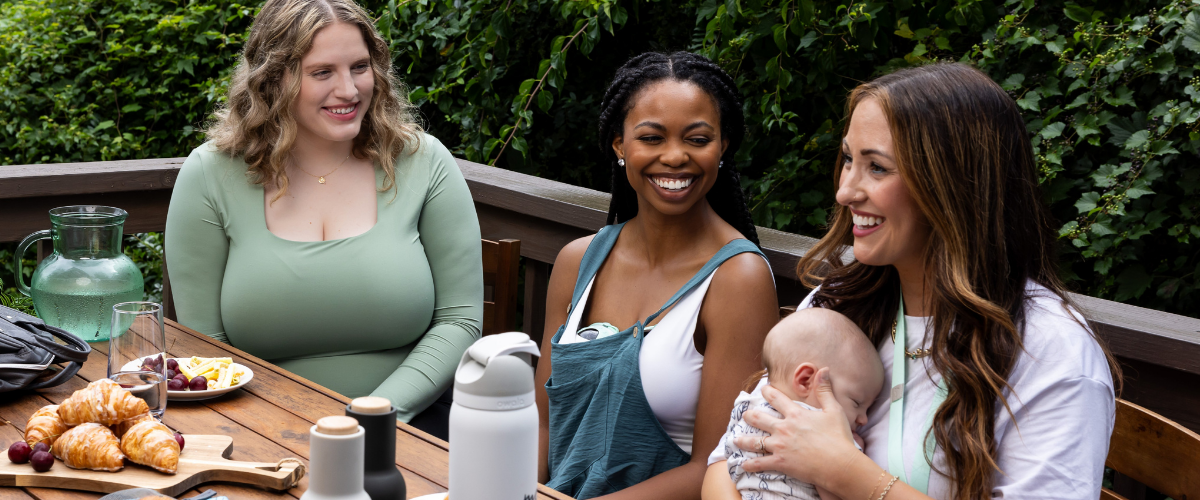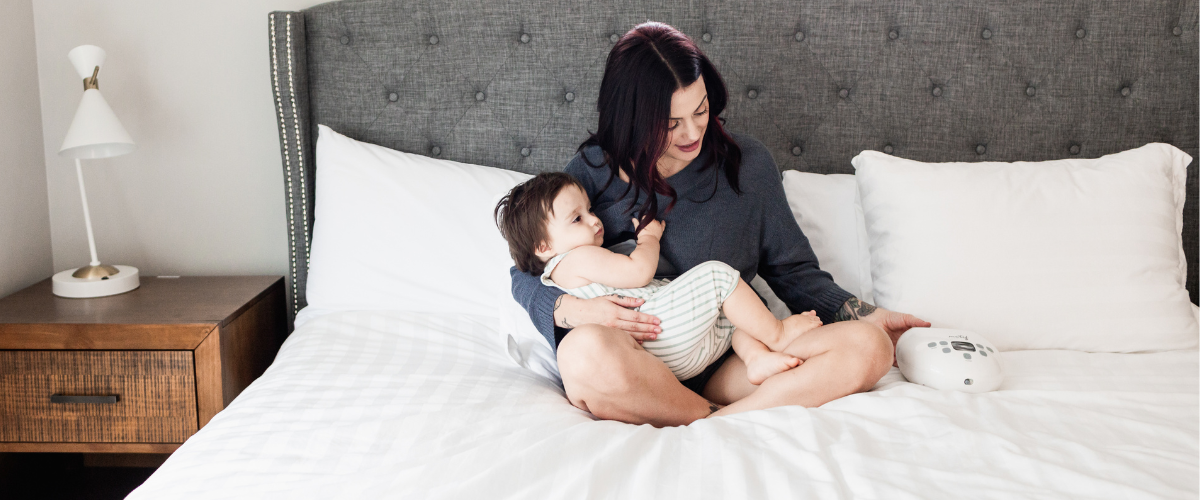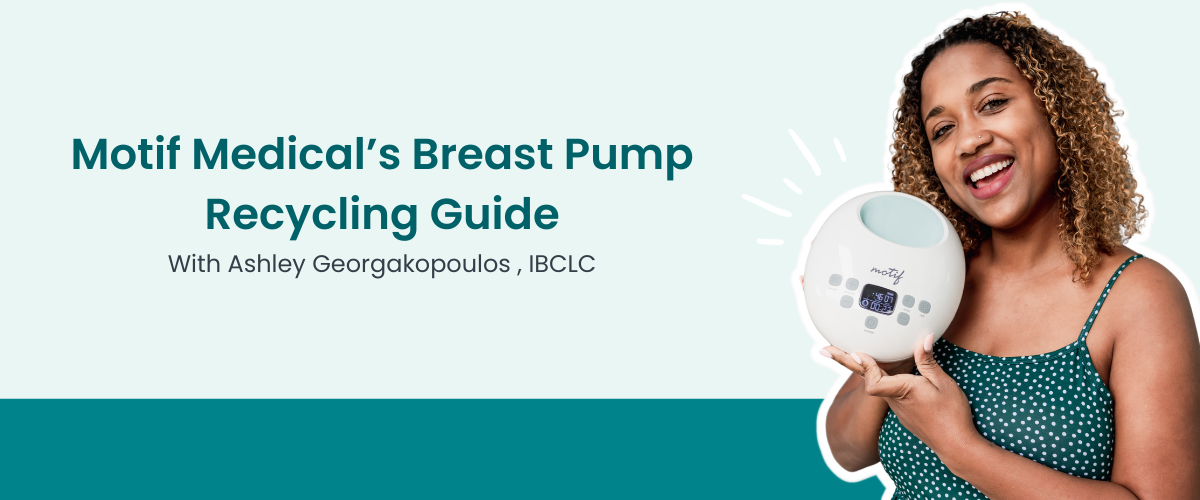Let’s talk about positions! Positioning refers to how we hold the baby while nursing, but it can also mean different positions while bottle feeding and pumping. Contrary to popular belief, while breastfeeding is a natural phenomenon, positioning is part of why breastfeeding is very much a learned behavior and technique.
The way we hold a baby to bottle feed is quite different from the way we hold a baby to breastfeed. Most people have the opportunity to see a baby bottle feeding a lot more frequently than breastfeeding, and then apply that method to breastfeeding. This can actually lead to complications and a lot of discomfort. Let’s change that!
Breastfeeding Positions
Nailing down the perfect breastfeeding position not only makes breastfeeding more comfortable for the mother and can minimize any pain risks, such as sore nipples, but it can actually help the baby drink milk more efficiently and effectively, spending less energy to remove milk, which puts energy expenditure into growth and development. It also helps protect and boost milk supply!
Because women are built beautifully different, and not all babies are the same, there is not only one way to position them for breastfeeding! Different circumstances, such as having had a C-section, can also influence the preferred position. As the baby grows, positions may change due to preference from either party.
The most common positions are:
- Cradle
- Cross-Cradle
- Football
- Laid Back aka Biological
- Side Lying
- Upright (most common in older babies and toddlers)
Cradle & Cross-Cradle
Football
As the name suggests, this is the position in which the mother holds the baby much like one holds a football: to her side, most of the weight of the baby resting on her forearm, and the baby’s head supported by the hand. The mother’s arm may very well need to be supported by a throw pillow, breastfeeding pillow or chair arm. A common mistake made with this position is the baby laying primarily on its back and having to turn its head to latch.
The baby needs to be curled into the mother, facing their body to her. This position is ideal for mothers who have had a Cesarean section and want to avoid having any pressure on the incision site, but it can also be a great position for mothers with larger chests or for mothers of multiples.
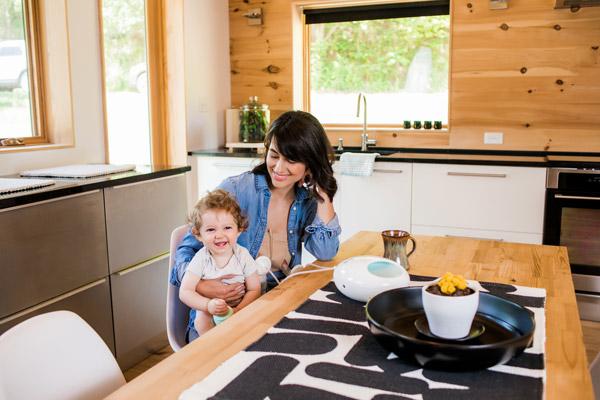

Cradle hold and cross-cradle are almost the same position, and most likely the position many think of. The key difference between the two is actually where the mom places her hand or arm. Cradle uses the forearm of the same side of the breast being fed from to support the head and the baby’s back, while cross-cradle uses the hand opposite the breast being fed off of, reaching across and placing the hand at the base of the neck. While some breastfeeding pillows hoist the baby into a horizontal line, it’s actually preferable for many to angle the baby’s lower end downward. This may be a preference aspect for the mother, depending on the size of her breasts.
Laid Back & Biological
When a baby is first born and placed on the mother’s chest, they can actually implement what’s called the, “breast crawl.” Using gravity, instead of working against gravity, allows the baby to push themselves down their mother’s chest and self-attach to the breast. This can also be in a guided fashion, in which the mother simply lays back, and places the baby nose-to-nip, and rests while the baby feeds.
Laid back, or biological, feeding has many benefits. It’s the most natural and innate form of feeding, which allows the baby to position properly, but also takes pressure off of the mother’s perineum.
Mothers can be quite sore postpartum, but still need to breastfeed quite often, so a seated position can sometimes get uncomfortable until swelling and soreness resolve. This position also allows the mother’s shoulders to remain rolled back, relieving any tension in the neck and shoulders from sitting up to feed.
Laid-back may also be recommended if the mother has an oversupply, or if the baby has a feeding issue such as tongue-tie, being unable to control the flow rate of the milk. The gravity works, once again, in the baby’s favor, slowing the flow to a more controlled rate they can swallow comfortably without choking.
Sore nipples may actually benefit from this position, as well, as the weight of the baby’s head pushes down over the nipple and areola, which then requires less pulling and tugging on their end to stay attached throughout the feed. Other positions in which they may be reaching up may irritate further until resolved.
A sub version of this position is over-the-shoulder. This can be beneficial for working out any clogs in the upper region of the breast!
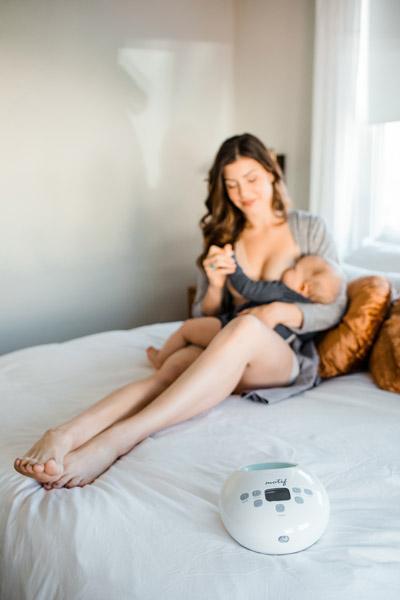

Side Lying
A personal favorite, this position allows the mother to breastfeed safely if they are feeling drowsy. Mothers tend to make more melatonin while breastfeeding, as babies do not make enough of their own until around four to five months of age, and so the effects of this can make not only the baby, but the mother sleepy, as well.
The fear of falling asleep while feeding the baby sometimes leads to the mother wanting to use a recliner or rocking chair to feed, but the American Academy of Pediatrics (AAP) actually suggests a side lying position for mothers who feel they may fall asleep while feeding their baby. This eliminates the risk of dropping their baby, and allows the baby to still be attached comfortably, safely and appropriately. This position also has benefits much like laid back, in which the mother is not sitting upright putting pressure on the perineum, which may be sore postpartum.
Upright
Older babies and toddlers who are still breastfeeding may actually prefer to sit up in the lap. As long as the feeding is comfortable and the baby is growing well, this is perfectly fine!
Breastfeeding Position Checklist
A rhyme that I often teach parents, in order to help them checklist positioning points, actually applies to many, if not all, positions:
“Tummy to Mummy
Nose to nip
Flex the hips
To open the lips”
“Tummy to Mummy”
Babies need to be in a straight alignment of sorts to feed most effectively. The baby faces the mother with the entire body, not just the head. Having to turn their head puts strain on the neck and the ability to suck-swallow. It’s important to also unswaddle to feed. Arms should be out to their sides, not in front of them creating space between themselves and the mother.
They do like to use their hands when they feed. This is encouraged and preferable to allow them, as opposed to pinning their arms down to their sides. Think of it like a hug, one arm under the breast, the other around the other side.
“Nose to Nip”
While most would naturally want to aim the baby’s mouth directly at the nipple, this can actually create a tucking effect to the chin. A tucked chin cannot remove milk efficiently, and can actually mimic a shallow latch, which can be quite painful and pinch the nipple.
Proper aiming would be putting the baby’s nose near the nipple, which may also mean sliding them back some in the opposite direction. A baby’s natural reflex is to use the nose to find the nipple, in which they then have full mobility to tilt the head back and open much wider for the latch.
This also means that the mother should support the head only at the base of the neck, so as not to push the head forward, also causing a tuck to the chin. This can be done with the forearm or the L shape in the hand between the thumb and forefinger, depending on the chosen position.
“Flex the Hips to open the lips”
The lower back can easily be forgotten, but it needs support, too! Giving the baby something to bare down on with their feet or legs helps support their lower back. This can be done with the mother’s opposite arm, a breastfeeding pillow, a crossed leg, or in the case of the football position, having a pillow or seat back behind the mother’s arm. When a baby is more comfortable, they will latch and stay latched with less fussing.


Bottle Feeding Positioning
Believe it or not, bottle positioning is very important for a baby receiving breastmilk. Even with the slowest flow nipple on the market, gravity still causes milk to flow faster from a bottle than at the breast, and requires much less effort from the baby. This means that a baby can easily overfeed from a bottle. The fact that breast milk changes with the growing baby, concentrating in calories as the baby grows, means that a baby who is receiving breastmilk will actually need less volume (ounces) per feeding than a baby receiving formula.
Many mothers who aren’t aware of this stress out when their pumping output does not keep up with perceived volume needs (we do not need 7-8 ounces for a feeding!). A pumping mom can have a much more realistic and appropriate goal with paced bottle feeding. This is heavily reliant on the position of the bottle when feeding the baby, as well as the caregiver responsible for the feedings!
Have the baby sit more upright in the arms of the person providing the bottle. Another option can be placing them in a bouncy seat, high chair or a car seat if the baby is hesitant to receive a bottle, and used to only breastfeeding. Changing the scenery or the setup can help them accept a bottle.
The bottle itself should actually be held more horizontal, so as to slow down the flow of gravity. Remove the bottle from their mouth every couple of ounces for a few seconds to allow the stomach to communicate with the brain that it is full. Babies usually take 20 minutes on average to feed at the breast, this allows them to eat only what they need, and not overeat. They are much faster at the bottle, so making them slow down is crucial!
There is an exception to this. Premature babies or babies who have fallen off the growth curve may actually need to pack in more calories per feeding, and use less energy doing so. In this case, a faster flow nipple may be needed, with no interruptions to the feed.
Slowing the pace while bottle feeding can actually help with babies who are diagnosed with acid reflux (GERD) and colic.

